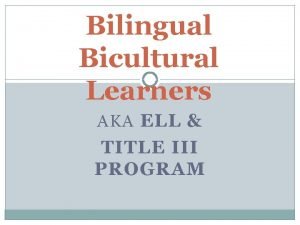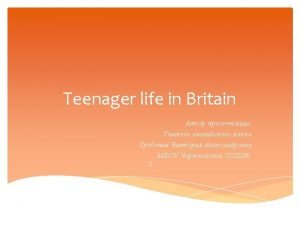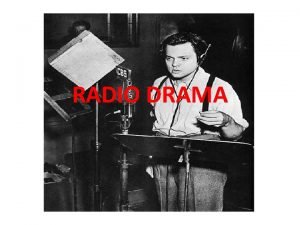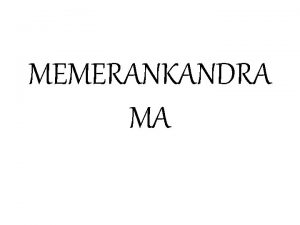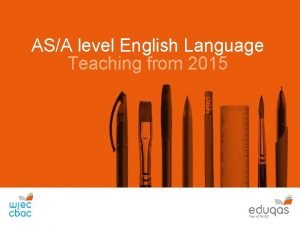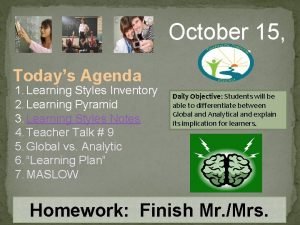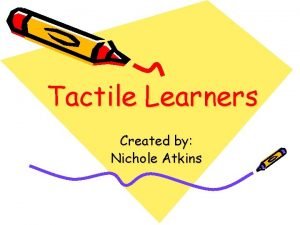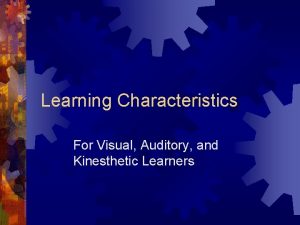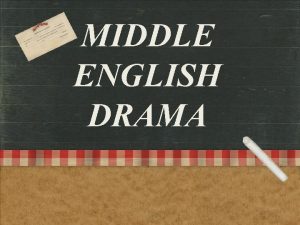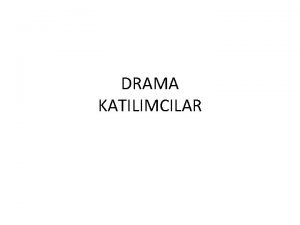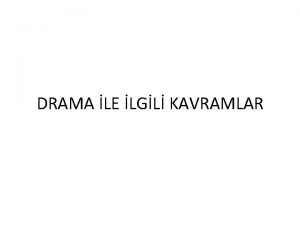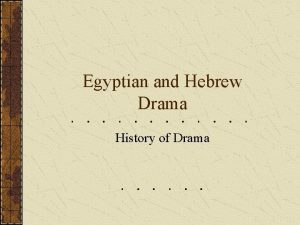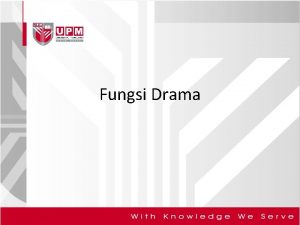Drama for English Language Learners Wendy K Mages
















- Slides: 16

Drama for English Language Learners Wendy K. Mages Harvard Graduate School of Education

Drama & Language Theory n “Being ‘exposed’ to a flow of language is not nearly so important as using it in the midst of doing” (Bruner, 1990, p. 70) Research n 3 Meta-Analyses indicate drama does affect language development (Conard, 1992; Kardash & Wright, 1987; Podlozny, 2000)

Why is Drama Beneficial for Language Acquisition? n Provides n Drama a context for language use simultaneously engages the mind, the body, and the emotions


First Stanza of the Poem There were a few dozen who occupied the field across the road from where we lived, stepping all day from tuft to tuft, their big heads down in the soft grass, though I would sometimes pass a window and look out to see the field suddenly empty as if they had taken wing, flown off to another country.

A “Taste” of Drama n Sample a number of drama strategies n Experience what it is like to be a student in a drama class

Drama Teaching Techniques n Freeze – Ensures safety of participants n Side Coaching – Listen to the words I use – I will try to coach you with my voice n No Right or Wrong – Creates safe environment for exploration – Encourages participation

Strategy: Walk About n Techniques – Fast & Slow – Heavy & Light – Large & Small – High & Low n Rationale – Engage participants – Dramatizing vocabulary • Aids comprehension • Aids retention – I used vocabulary from the poem

Strategy: Character Walk n Techniques – Lead with your head – Lead with your Toes – Lead with one shoulder – Etc. n Rationale – Encourages whole body engagement – Teaches vocabulary for body parts

Strategy: Greetings n Techniques – Hello • Use just your eyes • Use your head and face • Use your head, face, and voice – Goodbye • Touch feet • Touch elbows – Introductions • Formal • Informal n Rationale – Begin collaborative work – Teaches basic greetings in context – Teaches informal and formal introductions

Strategy: Statues n Technique – Number off by twos – Use your whole body to show me • • Happy Sad War (view museum) Peace (view museum) n Rationale – Engage body in vocabulary development

Strategy: Group Sculpture Tableaux n Technique – As a group build a sculpture of a word – Sculptures: • • Waiting for Rain Shocking Mysterious Pain n Rationale – Encourage collaboration – Vocabulary development

Strategy: Word Symphony n Technique – Distribute words from text – Allow students to experience the sound of the words – Conduct the word symphony n Rationale – Encourage students to explore the sound of words – Introduces vocabulary from the text

Strategy: Choral Reading n Technique – Show first stanza of poem – Distribute lines of the poem – Discuss line meaning in small groups – Students collaborate to perform poem n Rationale – Introduces text interpretation – Introduces text performance – Promotes comprehension

Questions?

Thanks!
 Audioize
Audioize English language learners
English language learners Reading strategies for english language learners
Reading strategies for english language learners Cr part 154
Cr part 154 Bruegel
Bruegel Teaching young learners english
Teaching young learners english Serial soap
Serial soap Eğitici drama ve yaratıcı drama arasındaki fark
Eğitici drama ve yaratıcı drama arasındaki fark Drama drama
Drama drama Arti dramoi
Arti dramoi A level english language language change
A level english language language change Global vs analytical learners
Global vs analytical learners How to teach grammar to young learners
How to teach grammar to young learners Nichole atkins
Nichole atkins Remedial teacher meaning
Remedial teacher meaning Global vs analytical learners
Global vs analytical learners Characteristics of kinesthetic learners
Characteristics of kinesthetic learners

